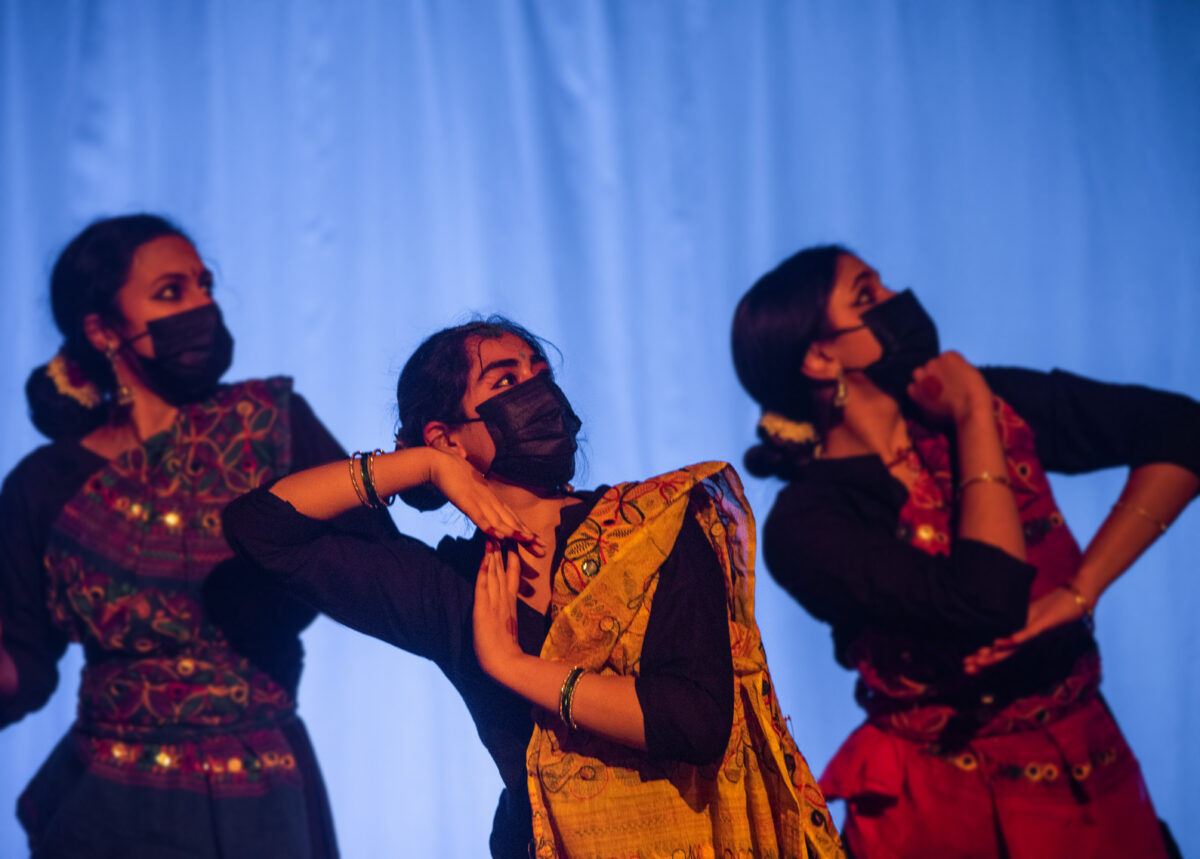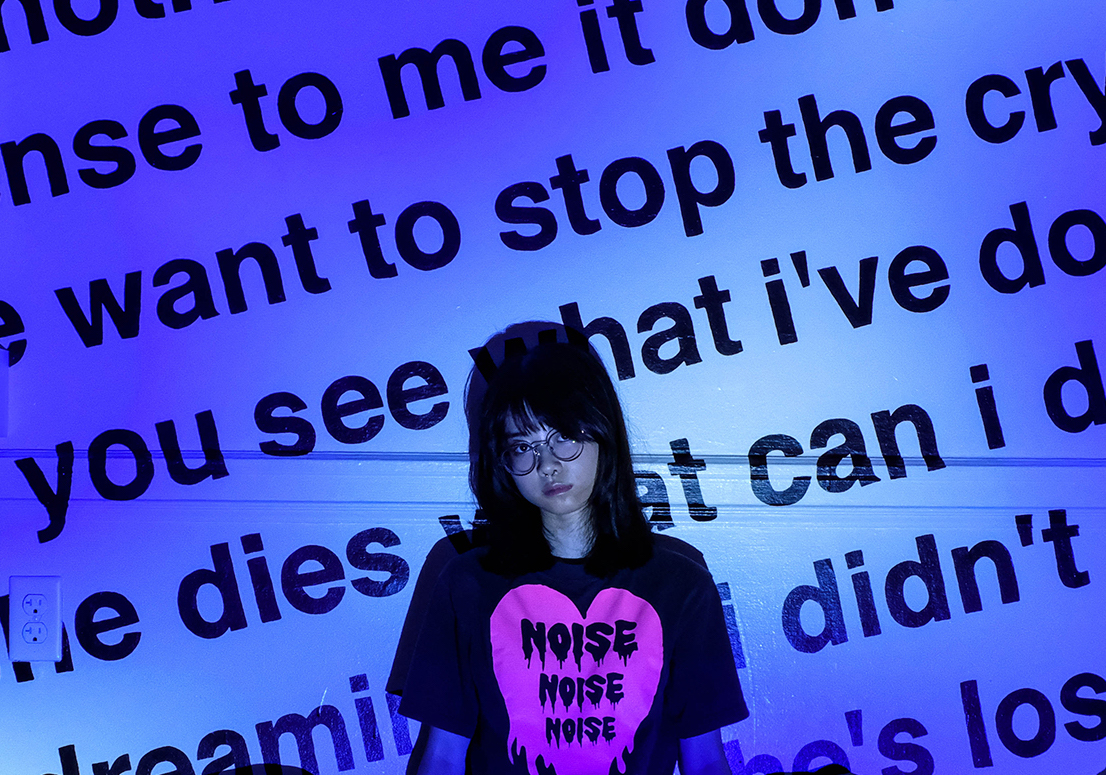1. Trashion Show, Julia Chatterjee, 2. When The Coyote Stole The Fire, Stuti Khandwala, 3. 116 x 31, Karyn Nakamura, 4. Monologue, Montserrat Garza
Julia Chatterjee, Montserrat “Montse” Garza, Stuti Khandwala, and Karyn Nakamura
Every year, MIT students enrich their lives and embellish the campus community through art. Some enliven MIT’s campus theater scene. Others introduce the MIT community to the wonders of classical Indian dance. Others discover a campus fashion magazine and put their mark on it.
All four student winners of the 2022 Laya and Jerome B. Wiesner Student Art Awards found space to explore their creative voices in their chosen genres. And all of them shared their skills and enthusiasm with their classmates–assisting other MIT creatives in finding their own voices and venues. The Wiesner Awards are presented annually to up to four undergraduate or graduate students, living groups, or organizations, for outstanding achievement in and contributions to the arts at MIT. An endowment fund provides a $2,000 award to each recipient.

A Fashion Statement
Julia Chatterjee first discovered garment making when she helped her grandmother sew a poncho as a child. “I loved the sewing machine,” says Chatterjee ’22 (Mechanical Engineering with a concentration in Sustainable Design) who over four years served in nearly every possible role at Infinite Magazine, MIT’s student fashion and design publication. “And I’m addicted to crochet and knitting. In fact, the only all-nighter I pulled at MIT was to knit something for a photo shoot for the magazine.”
Originally recruited to play softball, the Illinois native wasn’t sure how she’d incorporate fashion into her MIT experience when she first arrived on campus. “In high school, fashion was framed as frivolous academically and as a career path,” she explains. “But once here, I felt ready and empowered to pursue this passion.”
An essential member of the Infinite Magazine team, Chatterjee has been community director, creative director, and briefly editor-in-chief. She was project lead for the 2019 Trashion Show, which featured garments made of upcycled materials. She consulted with the group that created Voxel, a campus maker space for musicians, clothing designers, and others interested in arts technology. Chatterjee has mentored dozens of undergraduates.
“I wouldn’t be the person I am without the Magazine, and the other opportunities I had to integrate design, engineering, and fashion,” says Chatterjee, who next year will pursue a Master of Arts at the University of Arts London Central Saint Martins College through their Material Futures program. “And maybe I helped pave the way to show this is something you can do at MIT.”

All The World’s A Stage
If theater were an orchestra, Montserrat “Montse” Garza ’22 (Computer Science and Theater) would be a one-woman-band. “I love how many pieces go into a big production,” says Garza, who in one campus production served simultaneously as lighting designer and lead actor. “But too often actors only interact with other actors, and tech people interact with tech people. I like being the bridge between those two groups.”
The list of things Garza has done at MIT theater is long and impressive. The South Texas native founded, along with fellow thespians, a new theater group, Life On Stage Theatre, focused on producing contemporary plays. She directed Next Act’s production of The Drowsy Chaperone, and essentially revived the club after years without a show. She has acted in dozens of roles, including that of Cecilia in a live cinema streaming performance of Fefu and Her Friends by Cuban-born playwright Maria Irene Fornes.
“Real talent in acting is rare enough, and finding it at MIT is extremely special,” wrote Theater Arts Professor Janet Sonenberg in her Wiesner Prize nomination letter for Garza. “Montse’s gifts as an actor are imagination, courage, and expressivity.”
Ken Urban, who teaches the MTA Playwright’s lab where Garza wrote her play “The Only Two people,” wrote that “Montse always pushes herself to explore the complexity of her characters and story. She is also an excellent respondent to the work of her peers, always responding honestly and with clarity to her classmates.
Garza will move to Seattle to work at Microsoft after graduation. She also plans to continue with theater.

Invigorating a Dance Club
Indian classical dance is a rigorous discipline that requires years of work to master. “It’s almost like an undergraduate degree, only a decade longer,” says Stuti Khandwala ’23 (Biological Engineering and Computer Science.) “Coming to MIT, I wasn’t sure I would have the courage to put my foot down and introduce to this new, international community an art form from back home.”
Born and raised in the Indian state of Gujarat, Khandwala did more than put her foot down at MIT. She, along with a few other undergraduates, invigorated Nritya, the Indian classical dance club founded at MIT in 2019. “I knew a few other independent dancers on campus,” says Khandwala, who has trained in the South Indian classical dance Bharatnatyam since first grade and did her 3-hour show Arangetram in 2016. “We decided there was no reason we should stop practicing our art just because we were away from its origins.”
In early 2021, Nritya placed third in “Tu Bhi Nachle,” a virtual nationwide competition. Last November, Nritya performed “Freedom,” in its Fall Showcase, before a packed house at the Kresge Little Theater; hundreds more saw the recording on YouTube. Khandwala recently performed “We are with U – An Invocation to the Dance God” at the Ukraine Fundraiser Nightmarket. She also brought together families at the MIT Spouses and Partners’ 50th anniversary and combined poetry with Bharatnatyam in collaboration with the South Asian Association of Students this spring. Khandwala is now producing Nritya’s spring video series titled “Elements of the Earth – Fire and Water;” the dance videos are scheduled for release in a week on Nritya’s YouTube channel. Khandwala wishes to garner more support and interest in the art so close to her heart, and thus grow and establish Nritya on campus and in the American landscape in her senior year.
At present, Nritya counts around a dozen members. While many are quite skilled, the group trains members with no prior exposure to dance as well. “This art is a novel form of emotional expression and really a way of life for me,” says Khandwala, who plans to pursue a joint MD-PhD degree after graduation. “Our group transcends all traditional boundaries of region, religion, experiences, gender and interpretations, which is the most wonderful thing about it.”

Lighting Up the Campus
Karyn Nakamura ’23 (Art & Design) first saw MIT on a gloomy winter day during a campus visit in 2019. Since then, the Tokyo-born artist has lit up campus with a stunning series of projections and installation artworks. “Lots of people come to college with a clear idea of what they want to do,” says Nakamura, who came to MIT undecided, but with a general interest in physics and history . “At some point I just started making whatever I want without trying to define it or fit it into a category. ”
Nakamura began making art in earnest after a 2020 course in Interactive Design. She learned to code in an Urban Design course, and found her first real audience on Instagram, where she posted under the handle @frog_spit_simulation images of dozens of sculptures and installations and interactive digital art she’d made working—mostly nights—in her workspace in building W97.
Last September, Nakamura participated in MAPP Montreal, a three-night projection mapping festival. In December, she used the windows at the Stratton Student Center as canvas for another projection. She has produced digital art that places the viewer inside a computer’s CPU, and built cloth and metal installations that dance in the wind. This April, over three nights, she worked her digital magic with an interactive projection onto the iconic windowed façade of Simmons Hall.
The range and scale of Nakamura’s work requires long hours and broad technical expertise. Neither of these have slowed her down. “I really have no idea what I’m doing except for what interests me today. ” she explains. “And I just continuously chase after that everyday – from building scale projections, to roombas, to the 13th pin of a VGA cable. ”
—
Written by Ken Shulman
Editorial Direction by Leah Talatinian, Arts at MIT
The Council for the Arts at MIT presents several awards annually to MIT students who have demonstrated excellence in the arts.
